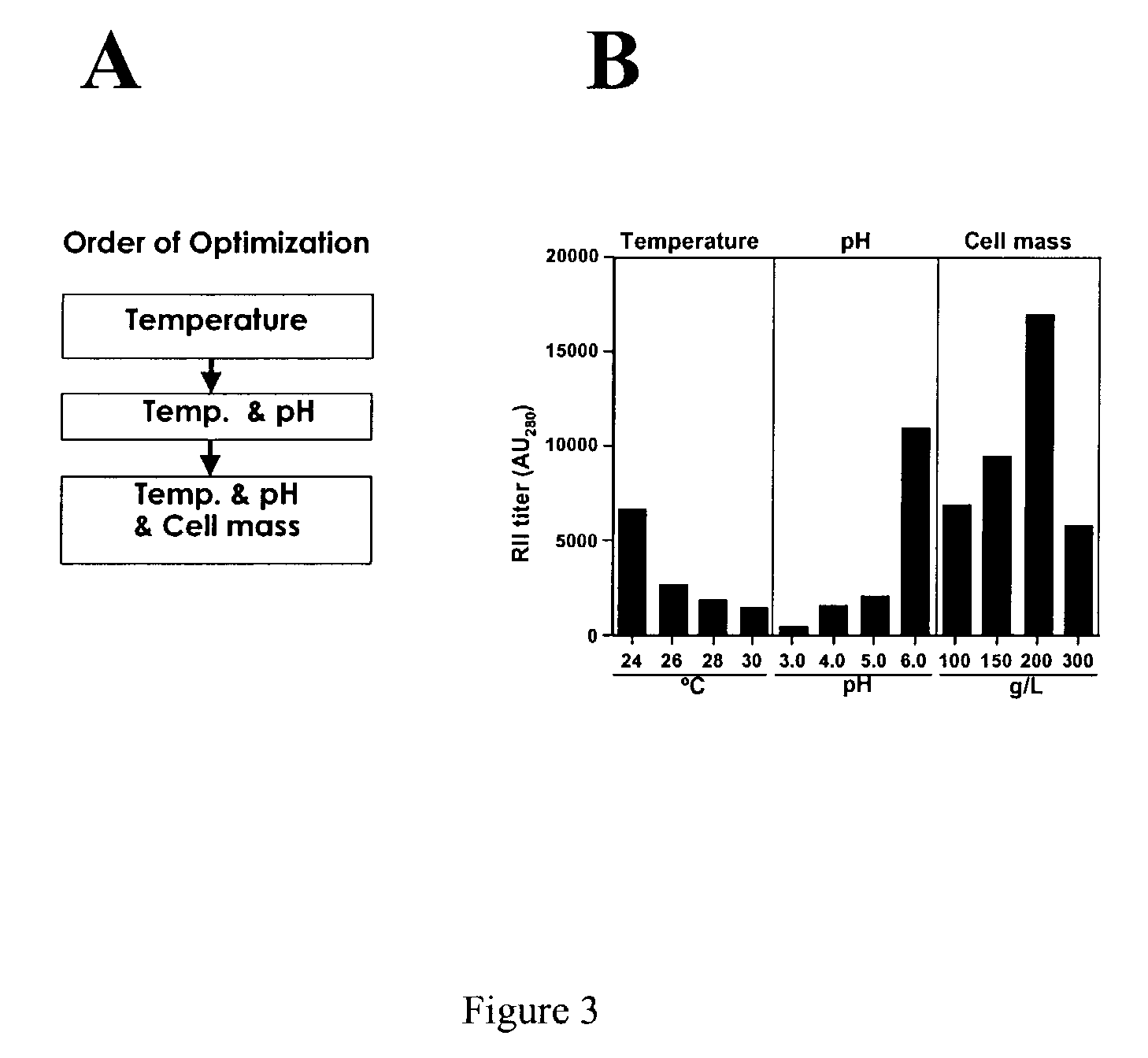Synthetic genes for malarial proteins and methods of use
a malaria pathogen and protein technology, applied in the field of genetics and immunology, can solve the problems of increasing the difficulty of controlling the disease, severe anemia, and particularly dangerous malaria to children, and achieve the effects of reducing vaccine doses, eliciting reliable immune responses, and improving immunogenicity
- Summary
- Abstract
- Description
- Claims
- Application Information
AI Technical Summary
Benefits of technology
Problems solved by technology
Method used
Image
Examples
example 1
Analysis of Codon Usage
[0056]The most commonly used codons for H. sapien and P. falciparum were determined from a Codon Usage Tabulated from Genbank (CUTG) website. Codon Adaptation Indices were calculated using the CodonW software by John Peden, available as a freeware, with a user-defined set of codon relative adaptiveness values (Wcodon) based on codon usage in a compendium of highly expressed human genes as described in the teaching by Haas, et al., 1996, which is incorporated herein by reference in its entirety.
example 2
[0057]Codon-optimized gene fragments encoding EBA-175 RII were constructed in order to test the hypothesis that codon optimization would improve the expression and immunogenicity of malaria DNA vaccine plasmids. Table 1 shows the differences between the most frequently used codons in the P. falciparum genes and in highly expressed human genes. For every amino acid, which can be encoded for by more than one codon, the most frequently used codon in P. falciparum is different from that used in humans. Approximately one in three nucleotides was changed to optimize the sequences, and the G+C content was raised from approximately 26% to approximately 56% in the optimized sequences as shown in Table 2. The CAI of the codon optimized pSRII and pSMSP142 genes was increased from <0.28 to ≧0.98 (maximum possible value 1.0).
[0058]
TABLE 1Comparison of most abundant codon for each amino acid used bymalaria parasite (Plasmodium falciparum) and highly expressedhuman genes (Homo sa...
example 3
DNA Vaccine Construction
[0060]The DNA vaccine containing the native gene fragment for EBA-175 RII has been previously described by Sim, et al, 1995, incorporated herein in its entirety by reference. Synthetic DNA sequences encoding the 616 amino acids of EBA-175 RII (3D7 strain) were designed by reverse translation of the amino acid sequence using DNAStar Lasergene99 (DNAStar, Inc. Madison, Wis.). The reverse translation used the most abundant codon for each amino acid found in a compendium of highly expressed human genes, except for S (serine), which was reverse translated as UCC rather than AGC (the two codons are used at approximately equal frequency in highly expressed human genes). Within the back-translations encoding RII, BamHI restriction enzyme sites were removed by changing individual nucleotides without altering the amino acid sequence. The RII gene (SEQ ID NO:1) was synthesized by Operon Technologies, Inc (Alameda, Calif.). The synthetic RII gene was amplified by PCR and...
PUM
| Property | Measurement | Unit |
|---|---|---|
| Volume | aaaaa | aaaaa |
| Volume | aaaaa | aaaaa |
| Volume | aaaaa | aaaaa |
Abstract
Description
Claims
Application Information
 Login to View More
Login to View More - R&D
- Intellectual Property
- Life Sciences
- Materials
- Tech Scout
- Unparalleled Data Quality
- Higher Quality Content
- 60% Fewer Hallucinations
Browse by: Latest US Patents, China's latest patents, Technical Efficacy Thesaurus, Application Domain, Technology Topic, Popular Technical Reports.
© 2025 PatSnap. All rights reserved.Legal|Privacy policy|Modern Slavery Act Transparency Statement|Sitemap|About US| Contact US: help@patsnap.com



